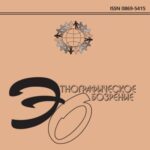Журнал — Scientific Reports
Rostovtseva, V.V., Puurtinen, M., Méndez Salinas, E. et al. Unravelling the many facets of human cooperation in an experimental study. Sci Rep 13, 19573 (2023).
DOI: 10.1038/s41598-023-46944-w
Humans readily cooperate, even with strangers and without prospects of reciprocation. Despite thousands of studies, this finding is not well understood. Most studies focussed on a single aspect of cooperation and were conducted under anonymous conditions. However, cooperation is a multi-faceted phenomenon, involving generosity, readiness to share, fairness, trust, trustworthiness, and willingness to take cooperative risks. Here, we report findings of an experiment where subjects had to make decisions in ten situations representing different aspects of cooperation, both under anonymous and ‘personalised’ conditions. In an anonymous setting, we found considerable individual variation in each decision situation, while individuals were consistent both within and across situations. Prosocial tendencies such as generosity, trust, and trustworthiness were positively correlated, constituting a ‘cooperativeness syndrome’, but the tendency to punish non-cooperative individuals is not part of this syndrome. In a personalised setting, information on the appearance of the interaction partner systematically affected cooperation-related behaviour. Subjects were more cooperative toward interaction partners whose facial photographs were judged ‘generous’, ‘trustworthy’, ‘not greedy’, ‘happy’, ‘attractive’, and ‘not angry’ by a separate panel. However, individuals eliciting more cooperation were not more cooperative themselves in our experiment. Our study shows that a multi-faceted approach can reveal general behavioural tendencies underlying cooperation, but it also uncovers new puzzling features of human cooperation.
Полный текст статьи доступен по ссылке — Unravelling the many facets of human cooperation in an experimental study
Статья подготовлена в рамках гранта, предоставленного Министерством науки и высшего образования Российской Федерации (№ соглашения о предоставлении гранта: 075-15-2022-328)



